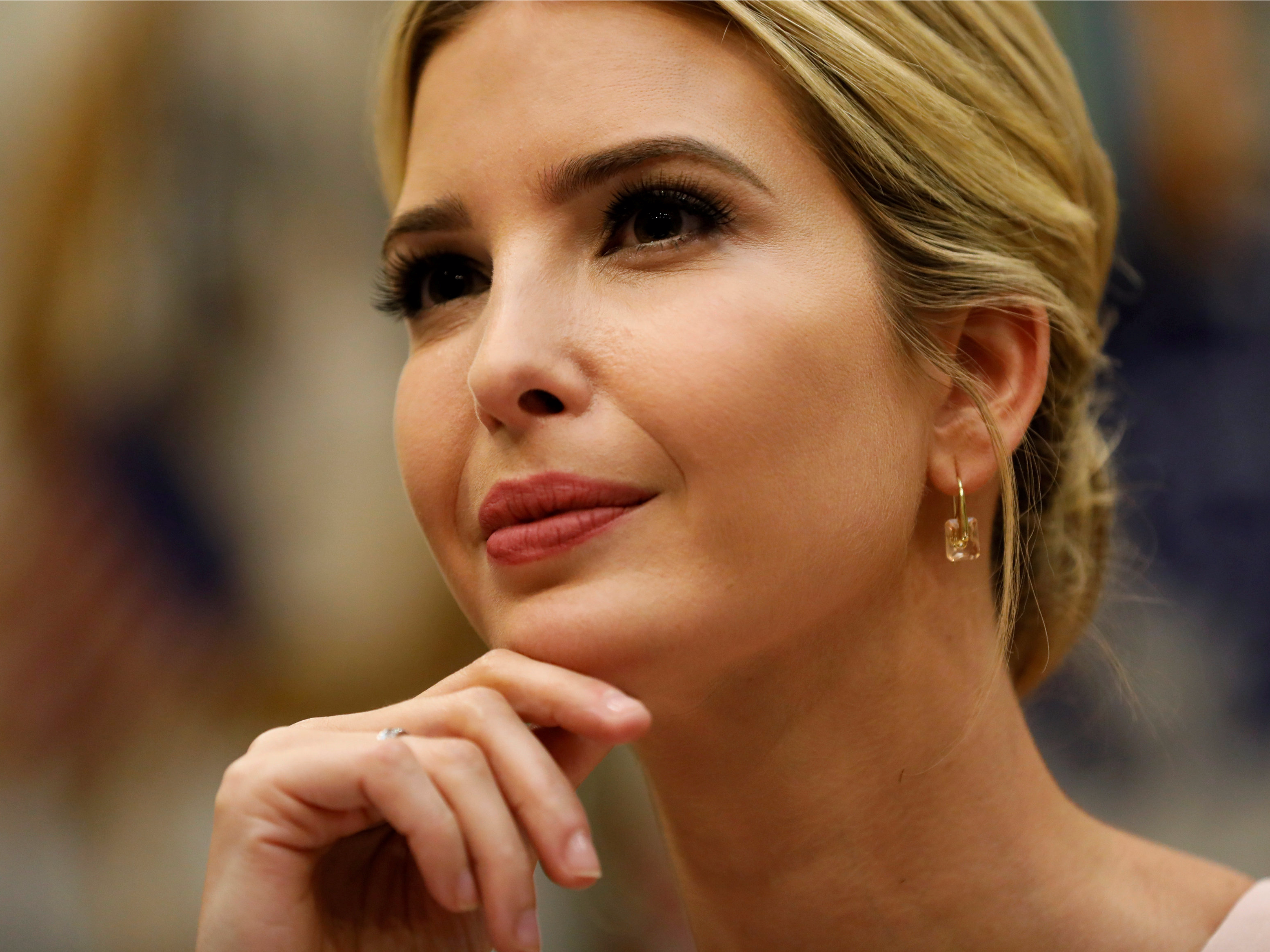Ivanka Trump, assistant to and daughter of US President Donald Trump, supports ending an Obama-era equal pay initiative.
The Wall Street Journal’s Ted Mann reported earlier this week that the White House will stop an intiative proposed by the Obama administration in 2016 intended to narrow gender, race, and ethnic group wage gaps.
In its announcement, the White House issued a statement from Ivanka.
“Ultimately, while I believe the intention was good and agree that pay transparency is important, the proposed policy would not yield the intended results,” she said.
“We look forward to continuing to work with EEOC, OMB, Congress and all relevant stakeholders on robust policies aimed at eliminating the gender wage gap.”
The Obama-era intiative directed the Equal Employment Opportunity Commission to collect wage and pay data from private companies with 100 or more employees and federal contractors with 50 or more. The idea, in short, was to collect more data in order to better analyze wage gaps based on gender, race, and ethnic groups.
Neomi Rao, the administrator of the Office and Information and Regulatory Affairs, said the policy is "enormously burdensome," adding: "We don't believe it would actually help us gather information about wage and employment discrimination."
Ivanka, who has made challenges faced by working women one of her central missions before and during her association with the White House, did not propose an alternative initiative in her statement.
The gender gap has narrowed but still remains

The gender wage gap has narrowed since the 1980s - in particular, among younger workers - but still remains, according to an analysis from the Pew Research Center.
Women earned 83% of what men earned in 2015, according to the think tank's analysis of median hourly earnings of both full-and part-time US workers. When looking at adults aged 25 to 34, the 2015 wage gap was smaller, with women earning about 90% of what men earn.
The Census Bureau, meanwhile, looked only at full-time, year-round workers and found that women earned 80% of what men earned in 2015.
As for why the gender pay gap continues to exist, Pew cites several ideas:
- The think thank found in a 2013 survey found that women were more likely to say they had taken breaks from their careers to care for their family, which can have an impact on long-term earnings. Women continue to be overrepresented in lower-paying positions, even though they have made strides in higher-paying jobs that have been traditionally occupied by men. Gender discrimination could be a contributing factor as well. In a 2014 survey, the think tank found that 77% of women and 63% of men said "this country needs to continue making changes to give men and women equality in the workplace."
Even at the top, women don't always get compensated like their male counterparts
But even when women make it to the top, they do not always get compensated the same as their male counterparts.
In a May 2016 research note to clients, a Morgan Stanley team led by Adam S. Parker shared a chart showing the average executive pay gap by global sector during the five years leading up to the chart's publication, which they estimated using regression models.
The average executive pay gap was the largest in utilities and materials, at 14.5% and 12.2% respectively, and the smallest in staples and industrials, at 0.2% and 3.6% respectively, according to the team.

In their analysis, Morgan Stanley used the MSCI World Index, meaning that this data is for large to mid-cap companies in developed markets. The analysis excluded Japan, which has an incredibly low representation of female executives.
The Morgan Stanley team also reported that female representation in key positions is the highest in telecom, staples, and utilities, and the lowest in energy and industrials, which suggests that higher representation does not necessarily translate to equal compensation.

